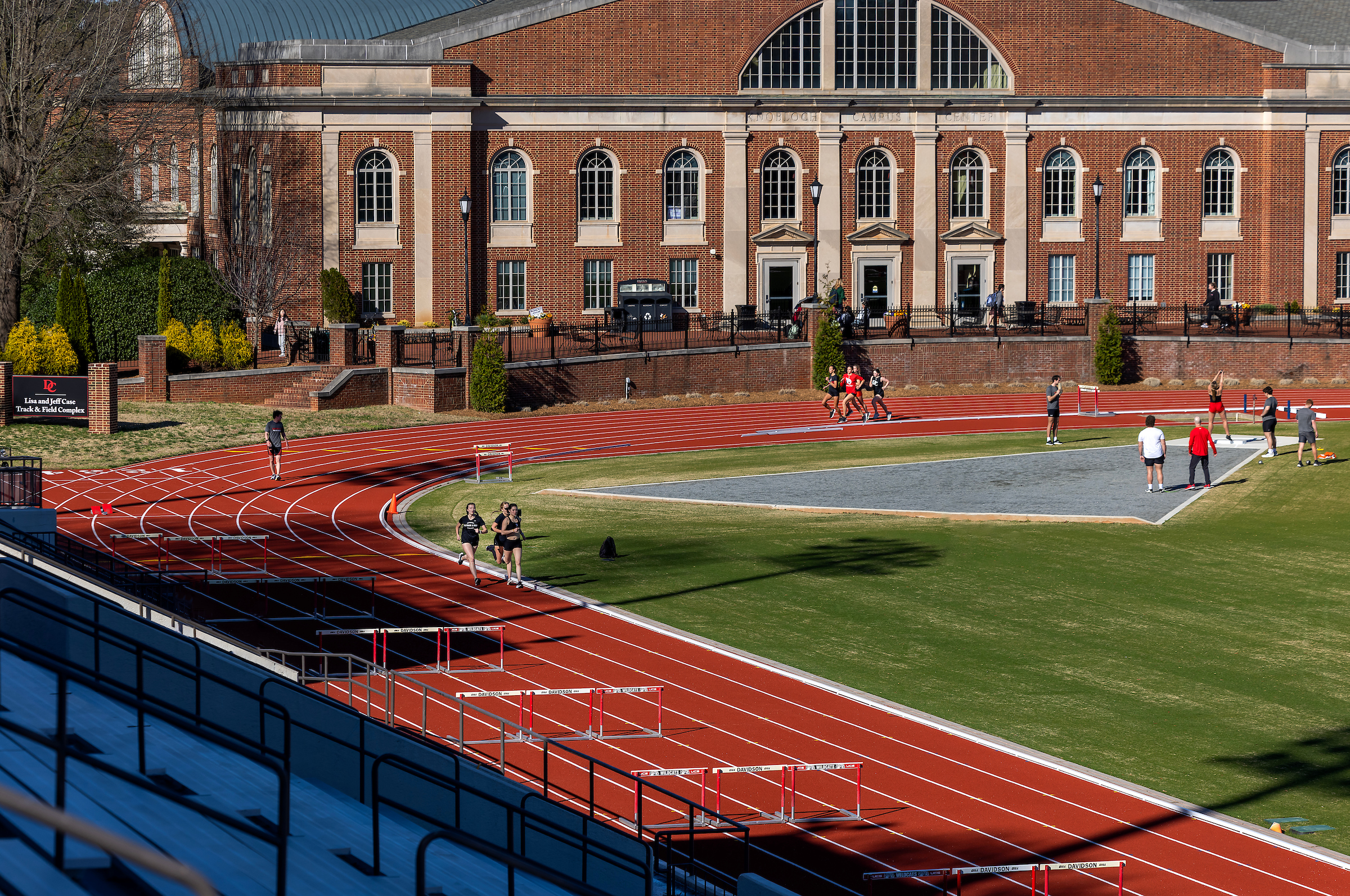Divine Dining: Restaurateurs Elevate Queen City’s Spirits, Communal Cuisine in Once Holy Spaces
June 24, 2024
- Author
- Jay Pfeifer

In early 2009, Jeff Tonidandel ’98 and Jamie Brown ’99 took the biggest gamble of their lives: They opened a restaurant.

Everyone knows opening a restaurant is a notoriously shaky proposition—the National Restaurant Association pegs a new joint’s chance of long-term success at just 20%. Almost 60% close within the first year.
Adding stress: When Tonidandel and Brown took the leap, the economy was buried in a deep recession. And, oh yeah, neither had any relevant experience.
“The first day I ever worked in a restaurant was owning it,” he says. “We joke that when we opened, if you gave our bartenders a quiz of the difference between tonic water and soda, nobody would have passed.”
Fifteen years later, Tonidandel ’98 and his wife, Brown ’99, are among Charlotte’s elite restaurateurs. What started with 11 tables now stretches across five different dining concepts with a sixth set to open this summer. When that place opens, the Tonidandel-Brown Restaurant Group will employ a team of about 300.
“They’re really helping craft Charlotte’s dining identity,” says Kristen Wile, the founder and editor-in-chief of the Charlotte food news site Unpretentious Palate. “If your friends are coming to town and you want to show them Charlotte, you need to take them to Haberdish or to Supperland.”
The New Place
Right now though, Tonidandel and Brown are spending a lot of time in a 1915 building that was a church for most of its life. They bought it in 2022 and expect to open this summer as Leluia Hall, serving seafood and steaks.
That name is a spin on the building’s sacred roots (flip the two words and you’ll get it). The couple have a knack for fizzy names that belie the craft and precision of their menus.
They started with Crêpe Cellar and since have opened Reigning Doughnuts (a nod to Charlotte’s status as the Queen City), the craft beer-centric bar Growlers Pourhouse and upscale Southern Haberdish. Supperland, their ode to upscale family-style dining (and the first church they turned into a temple of fine dining) opened in March 2021 and is still one of the hardest tables to get in Charlotte. In 2022, they closed Crêpe Cellar, replacing it with the Italian concept Ever Andalo—which refers to the region in Italy where Tonidandel’s family tree is rooted.
The new place though—this has been tough.
Leluia Hall sits about two short blocks from Charlotte’s South End, a mini-boomtown where apartment buildings and high-rise offices have crowded out warehouses over the past 10 years. In five years, a 35-story and a 44-story tower will stand just 1,000 feet from the old church.
“They are literally building a million square feet, right there,” Tonidandel says.
Its potential is obvious but the building needed work. Lots of work. They have relocated entrances, ripped out the drop ceiling and installed a mezzanine—among many other flourishes. Along the way, they bumped into a host of structural surprises.
Walking through the kitchen, Tonidandel pointed to the brand-new gray, speckled floor. It’s exactly what you’d expect in an industrial space—tough and easy to clean. He noted that the surface actually curls up the walls, creating a lip about a foot high that will collect spills and prevent moisture getting into the walls.
Why is that so important? When they demoed the kitchen, they discovered that the metal beams behind the drywall had completely rusted out about a foot off the floor.
That required expensive, time-intensive remediation. (Check the Leluia Hall instagram or their Restaurant Road YouTube channel for more examples of their painstaking restoration.)
Even though the building was still a long way from finished in January, the flourishes for which Tonidandel-Brown restaurants are known were taking shape. The soaring overhead cross braces that were covered up by the regrettable drop ceiling were already a dramatic focal point.
However, the best look at the Tonidandel-Brown secret sauce was about a quarter-mile away, in a soon-to-be-demolished auto shop they have claimed as a staging area/woodshop.
This is where the hard-earned pragmatism of restaurant ownership overlaps with creative spirit.
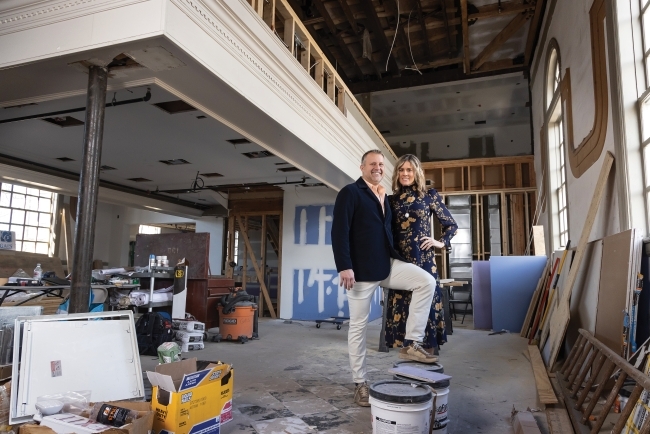
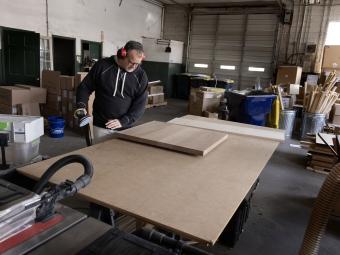
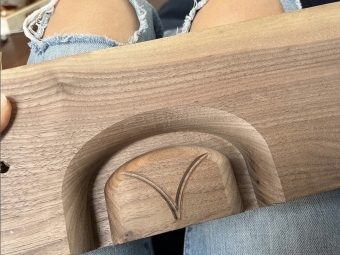
About two dozen rounded wooden nubs that look like small loaves of bread sit on a workbench. Tonidandel has assembled an impressive—and well-equipped—team of woodworkers, and they use a computer-controlled 3-D router to cut the blocks into shape. At Brown’s suggestion, they also engrave on either side a graceful, blooming V that calls to mind the silhouette of a bird on a child’s drawing.
The team will drill a hole in the top, coat each block in polyurethane and voila: a flower holder for every Leluia tabletop. They will hold dried Italian ruscus, a long-stemmed flower whose shape echoes a pattern on Leluia Hall’s wallpaper (also in storage in the shop).
“We looked eight months for a flower vase. And I have not been able to find the right thing,” Brown says. “So, I saw this thing one day on Pinterest and I was like, ‘This is what I’m looking for. This is what I’m trying to get.’
“I drew it up for Jeff and he 3-D modeled it.”
The flowers and their holder will be beautiful but they also offer a shortcut: Dried flowers don’t need to be replaced or watered. A first-time restaurant owner might put fresh flowers on every table, without realizing she’s saddled her team with a daily chore.
“Decisions like these will eat up your staff,” Brown says.
Leluia’s tables sit ready for deployment in a loading bay nearby. When they were building tables—oh yeah, Tonidandel and Brown’s kids, Eli (12), Isaac (9) and Isabella (14), hand-built the tables for Leluia and Supperland—they built a couple extras that can be swapped when others need a little work.
“The last thing you want to do is close down because you’ve got to resurface your tables,” Tonidandel says.
That kind of problem-solving has deep roots at Davidson.
The dining rooms, kitchens, dishwasher pits and walk-ins of the Tonidandel-Brown restaurants surface a nonstop blend of problems and opportunities that combine art, commerce and leadership. The crucible of the hospitality industry, it turns out, has revealed the value of their broad education.
The restaurant business is the epitome of the liberal arts,” Tonidandel says. “We have to make thousands of decisions to make this place come together. And it’s taking a whole disparate group of skills of woodworking, of cooking, of health inspections, of managing people, just putting it all together.
As their offerings and ambition have grown, the challenges they face have shifted as well.
“Now it’s morphed into leadership,” Brown says. “And I think that’s where maybe you go back to your roots of a place like Davidson where you’re actually learning those skills.”
“Pretty much everybody on our team is better at their job than we are,” Tonidandel says. “So it’s counting on them and leaning on them and trusting them, too, that they will do their part and we can help guide the ship.”
Jen O’Brien ’00, a Wildcat point guard who was inducted into the Davidson Hall of Fame in 2011, was a teammate of Brown’s. Today, she lives in Charlotte and finds herself calling her old friends to snag a table.
“And I wonder what their secret is, right?” she says. “I think the thing is that they’re just phenomenal people. I think they deeply and genuinely care about other people and their success. And they try to put people in a position to be successful.”
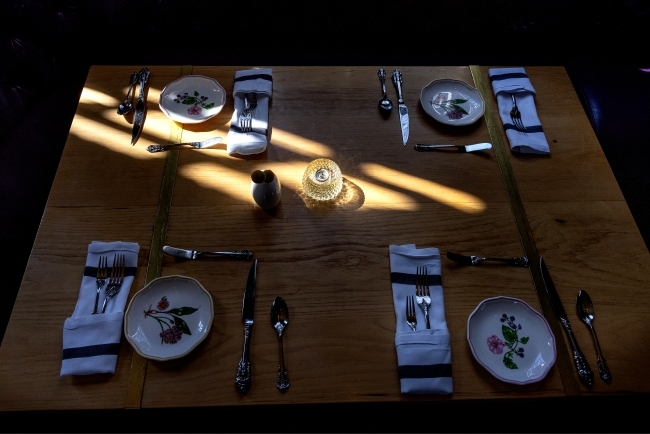
Davidson Days
Tonidandel and Brown followed almost parallel paths through Davidson. They both earned political science degrees. They were both scholar-athletes—and leaders on their teams.
A tennis player from the Cleveland suburbs, Jeff was the third of three Tonidandels to captain the Davidson men’s tennis team.
Jamie and her twin sister Kerry came to Davidson from Pittsburgh as highly recruited basketball players. They left with their names all over the record books.
O’Brien says they were part of the reason she decided to play for Davidson.
“Jamie and Kerry were a top-25 recruiting class at Davidson and that was unheard of back then,” O’Brien says. “How could you be a point guard and not want to play with Jamie and Kerry Brown in the program they were helping to build?
“Jamie was one of the most driven and disciplined teammates that I’ve ever been around,” O’Brien says. “A very positive person. She led a lot by example but was also a vocal leader.”
The close quarters of the Davidson athletic program put Tonidandel and Brown in overlapping social circles for their entire time on campus but they didn’t start dating until after they graduated.
“My sister and I were roommates in Duke in our junior year and we would often see Jeff in the common space,” Brown remembers. “I didn’t even know him that well but he’d be sitting in there watching Rachel Ray and Alton Brown. And I was like, ‘This dude’s a little different' because all the other boys were watching sports.”
Both Tonidandel and Brown majored in political science but neither had clear plans after graduation. In fact, Tonidandel wound up staying in Davidson for two more years—this time as an assistant coach for Caroline Price, the head coach of the women’s tennis team.
Price coached Davidson women’s tennis for 32 seasons, from 1983–2013, and her 1984 team is the first and only to claim a national championship for Davidson. She also taught Tonidandel a lot about how to lead.
“She taught me some pretty amazing life lessons,” he says. “She never really expected me to be there as the assistant coach for the rest of my life. We had a lot of those conversations about what I would do after this. She was always asking, ‘What’s your goal?’”

The Dream
Tonidandel and Brown got married in 2006 after both had earned MBAs. But they still hadn’t decided on their ultimate goal.
They were working jobs in marketing and sports and they knew they wanted kids but first: they needed more time to listen for their calling.
So, they turned in their notices and booked one-way tickets to Europe.
“We had no plan, other than we wanted to go to Europe and just travel around and find ourselves,” Brown says.
They wound up living out of backpacks for eight months—and traveling around the world, hitting much of Europe before visiting South Korea and Japan.
When they returned, Tonidandel found his mind returning to Tarifa, the southernmost city in Spain. They spent six weeks there batting the idea of starting a restaurant back and forth.
At home, the Great Recession was in full swing—not exactly a great time to take that kind of entrepreneurial leap. But Tonidandel took Brown to dinner and revealed his plan. He had a business model he thought might work in a place he wanted to call Crêpe Cellar.
“Crêpes were a good way to get started because the economy imploded so much that people were looking for special experiences and date nights that weren’t expensive,” Tonidandel says. “You could get two crêpe meals and a half bottle of wine for $30 or $40.”
They bought a crêpe grill like they had seen in Europe and opened with 11 tables in a cozy spot in the funky former mill-town neighborhood known as NoDa (North Davidson).
It wasn’t easy. Brown got a marketing job so they could both have insurance. He worked six days a week in the restaurant and taught a full day of tennis lessons on his day off.
At the restaurant, he was doing a little bit of everything; the best way to get up to speed on a business that never really settles down. And Crêpe Cellar thrived, becoming exactly what he imagined: a neighborhood favorite.
Laid-back bar Growlers Pourhouse followed next door in 2011, but Tonidandel and Brown made the next big step in 2016.
Just a few doors down from Crêpe Cellar, they opened Haberdish. Haberdish marked a major evolution with its upscale Southern dining and creative, Instagram-worthy cocktails.
“It really wasn’t until we opened up Haberdish that I found my voice,” says Tonidandel.
A lot of people noticed. In 2018, Southern Living included it on its list of best bars and best restaurants, marking the first truly national recognition for the group.
Business was strong enough that Brown was able to leave her job and join the restaurant group full-time. She manages social media and marketing—in addition to overseeing restaurant design, decoration and a million other tasks.
A year later, Brown and Tonidandel announced that they had leased a former church in a different neighborhood and hoped to open in 2020. You can imagine how that played out.
The pandemic put them on their heels—they delayed opening the new place by a year while they met the endless challenges of running a business built on getting people together. (To get a feel for the personal and professional toll of that time, Brown kept a journal for the Charlotte Observer.)
Supperland opened in 2022, setting a new standard for polish and scale. It instantly made waves across the country with its creative menu and flourishes like absinthe-based cocktails. This time, Bon Appetit and Esquire joined Southern LIving in a chorus of praise.
Now, they have their next big opening at hand—with Leluia Hall. And when it opens this summer, it’s likely to be received with adulation and reservations made weeks or months in advance.
Would you be surprised to hear that they already know what’s next? They are deep into the process of moving a 120-year-old building out of the way of demolition into an empty lot next to Leluia Hall. They’re going to pick up the top two stories of a historic building, move it 750 feet and then…
“We still don’t know exactly,” Brown says. “We think it will be beautiful but we just haven’t figured it out for sure. We just think it’s the right thing to do to save this old building.”
Everything but the Ketchup
Brown and Tonidandel’s restaurants have grown in parallel with the dawn of Instagram, TikTok and Yelp. Presentation matters. Trends move quickly and novelty is crucial.
The staff of the Tonidandel-Brown Restaurant Group are constantly striving to keep the menu as compelling as possible.
“We have a culture of continuous learning and just improving all the time,” Tonidandel says. “This business changes so much just really, really quickly, that you have to stay on it and keep getting better every day or else you’re just in a lot of trouble.”
That means that they work hard. No shortcuts. Staples that could very easily show up on the delivery truck are made from scratch.
One example: They don’t even order tonic water. They make it.
“About the only thing we don’t make is ketchup,” Brown says.
We took a closer look at the detailed, labor-intensive work that goes into the cannoli at Ever Andalo. This isn’t a post-modern riff or a deconstruction. It’s simply an exceptional version of a timeless classic and they make it all from scratch. (The restaurant does offer seasonal specials but the vanilla cream cannoli is always on the menu.)
At many bakeries, the cannoli shell is a commodity. They can easily be ordered in bulk, saving on time and prep.
The pastry staff at Ever Andalo instead hand-form and fry the cannoli shells.
The real star of cannoli is, of course, the nutmeg-laced ricotta filling—which counterintuitively has its roots in the appetizer menu.
The process begins with fresh cheese curds. The Ever Andalo staff add lemon which causes the curd and the whey to separate. The curds are used to make the homemade ricotta cheese, which is used across the menu: as filling inside the hand-shaped burrata, as a topping on dishes like the Calabrian Chili Pappardelle and the Ricotta Gnocchi and, of course, as the base for the cannoli filling.
Added bonus: The whey runoff isn’t just discarded. The chefs use it to brine whole chickens for the piccata entree.

This article was originally published in the Spring/Summer 2024 print issue of the Davidson Journal Magazine; for more, please see the Davidson Journal section of our website.


